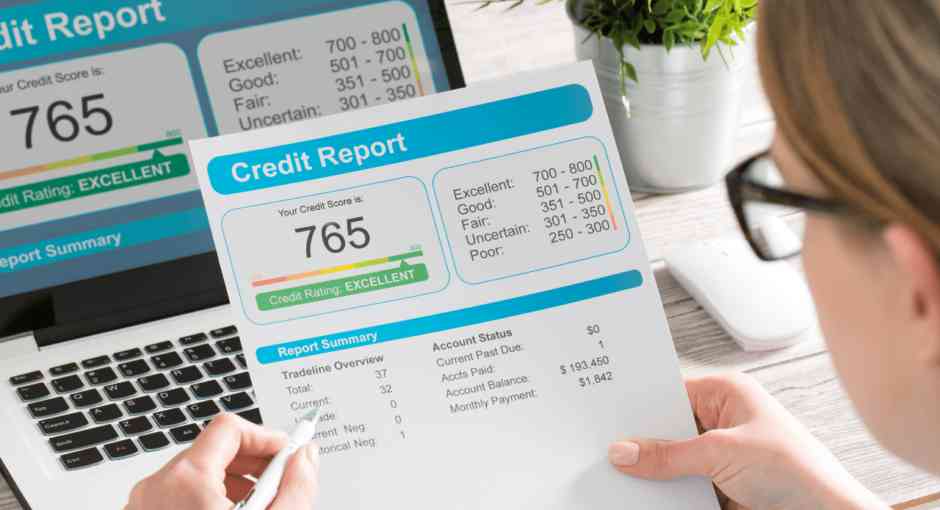What is a paid collection from credit report?
Paid collections are past-due accounts you later paid in full or settled through a partial payment.
Many consumers mistakenly believe that paying a debt means it automatically drops off their credit report, but it’s important to remember that creditors have no obligation to remove a paid collection, nor do credit bureaus have to take steps to scrub these items from your credit report.
This is why it’s a good strategy to negotiate pay-for-delete agreements as you pay off or settle overdue debts.
Of course, pay-for-delete negotiations don’t work if you’ve already paid a debt without one. Fortunately, it may still be possible to get a paid collection removed from your credit report.
If you’re trying to get a paid collection removed from your credit report, you basically have five options:
- Request a Goodwill Deletion from the Collection Agency
- Dispute the Collection Using the Advanced Dispute Method
- Ask the Collection Agency to Validate the Debt
- Negotiate a Pay-for-Delete Agreement
- Have a Professional Remove Collections
A paid collection can cause serious damage to your credit score—potentially dropping it by more than 100 points—so while it’s not always possible or easy to have one removed from your credit report, it’s definitely worth the effort.
5 ways to remove a paid collection from credit report
If you’ve paid a past collection, you’ve already taken a responsible step toward boosting your credit score. Understandably, you want to see it drop off your credit report altogether.
There are five proven strategies for making this happen.
1. Request a Goodwill Deletion from the Collection Agency
The first step is to mail the collection agency a “goodwill letter” that should explain your situation.
Don’t go into too many details, but let the debt collector know if you’re trying to buy a house but can’t because of the negative information on your credit report.
Let them know if you’ve been making on-time payments regularly for a year. Then kindly ask the debt collector to remove the collection account out of goodwill.
I know this sounds like a pipe dream, but it could work. If you need help writing your goodwill letter, use my sample goodwill letter template.
2. Dispute the Collection Using the Advanced Dispute Method
If the goodwill letter falls flat and the debt collection remains on your credit report, it’s time for a more advanced method.
For this method, you will need a current copy of your credit report. TransUnion, Experian, and Equifax provide you with a free credit report once a year.
Through April of 2021, you can get a free credit report every week because of the Covid-19 pandemic.
Visit annualcreditreport.com to get your free credit report.
Once you have your credit reports in hand (or on-screen), find the negative item you’d like removed and check it out closely. Be sure to check your report from each of the three credit bureaus.
Confirm all the details and if you see anything inaccurate, report the inaccurate information to the credit reporting agency or agencies.
The Fair Credit Reporting Act requires credit reporting agencies to show only accurate information in your credit history. If you can find inaccurate information, the credit bureau will have to fix the information. If it can’t fix the errors, the bureau should remove the negative item from your credit file.
This method can work because, rather than simply disputing the entire entry, you are going to write an advanced dispute letter that lists especially what is inaccurate.
Check the following items on the collection entry for inaccuracies:
- Balance
- Account number
- Date opened / Date closed (check all dates)
- Account status (e.g., Closed)
- Payment status (e.g., Collection)
- Payment history
- Delinquency date
- Credit limit
- High balance
- Anything else that appears to be inaccurate
After you have noted the inaccuracies you found, use my advanced credit dispute letter template to write your letter. (This page also includes addresses where you should mail the letters.)
Using this letter, you will insist that each piece of information is corrected or that the collection be removed.
This makes it more difficult for the credit agencies to verify the collection and hopefully result in them simply removing the collection altogether.
3. Ask the Collection Agency to Validate the Debt
If you can’t find inaccuracies on your credit reports, write to the collection agency and ask it to validate your debt.
Under section 809 of The Fair Debt Collection Practices Act, collection agencies are required to validate debts they are attempting to collect — if you request that they do so.
The rub here is that you have only 30 days to make the request after the collection agency’s first contact with you. If they are unable to validate the debt, you can ask them to remove it from your credit report.
4. Negotiate a Pay-for-Delete Agreement
When your original creditor can’t collect your past-due balance, it’ll sell your debt to a debt collection agency which means you now owe the money to the agency.
But when the agency buys your debt, it doesn’t pay the full amount. It may pay only a fraction of what you owed on your original account.
If the collection agency can get you to pay off the debt, it makes a profit. As a result, you could leverage a payment in your negotiations.
Had I tried this instead of just paying off my old Sprint balance, it may have saved me a lot of trouble.
Here’s what you do: You offer to pay part of your balance due in exchange for getting all negative information related to the debt off your credit report. Offer to pay 30 percent of old debt, for example.
For this to work, you have to get this agreement in writing. An agreement over the phone won’t hold up. You could do your part and pay the agreed-upon amount only to learn the agent you spoke with didn’t make a record of the deal.
Now, if you owe $30,000 on an old credit card charge-off, you’d have a hard time coming up with a lump sum so large. Even 30 percent would still be $9,000.
But this pay-for-delete strategy can help when you can afford to make a payment.
5. Have a Professional Remove Collections
There’s an entire industry devoted to credit repair. A professional credit repair company like Lexington Law Credit Repair could help restore your credit — usually within three or four months.
They won’t take any action you couldn’t take yourself. Since credit repair is all they do, it’ll work faster and more efficiently.
You would need to budget some money for the monthly payments, which average about $100 depending on the plan you choose. There’s also a one-time set-up fee for most credit repair companies.
But if you want to get your personal finances back on track without spending your free time on the phone or writing letters, you should consider this kind of service provider.
How a paid collection impacts your credit score
Although they’re better than unpaid collections, paid collections can definitely lower your credit score.
By how much?
While credit score algorithms take into account dozens of unique factors and it’s impossible to know exactly how many points your score might drop, Credit Karma has a neat Credit Simulator tool that can help give us an estimate.
For example, someone with an excellent credit score of 771 that has an account fall into collection would potentially see their score drop by more than 130 points!

Again, there’s no one-size-fits-all answer here, but the bottom line is that the impact would be significant.
When lenders and potential creditors look at your credit history, they don’t like to see evidence of past debts that went unpaid, and they’ll often flag you as a higher risk as a result.
The good news, as outlined above, it is possible to remove a paid collection from your credit report.
How to Avoid Collections
It’s best for your credit and your finances to avoid collections when possible. Here are some steps you can take to avoid collections:
- Track your spending to create a monthly budget and cut down on unnecessary expenses. There are a slew of budget tracking resources available on the internet, and many of them are free.
- Consider debt consolidation if you have trouble keeping up with minimum payments.
- Try negotiating with creditors before your account is sent to collections. If you cannot make your minimum payments for a good reason, reach out to them and explain your case.You never know until you try — and this is something certainly worth trying. The creditor may be willing to negotiate a new payment plan with you, allowing you to avoid being sent to collections or reporting a charge-off on your account.






